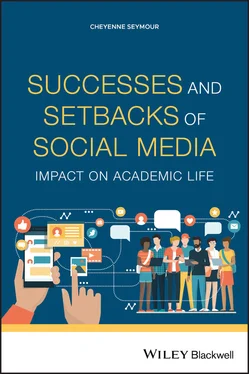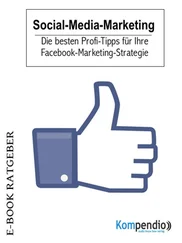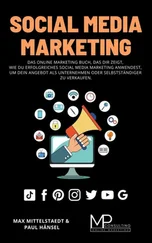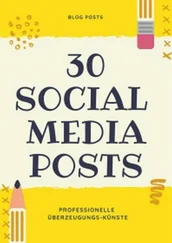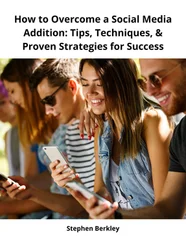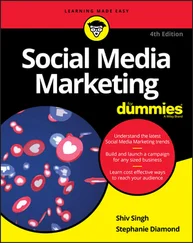Social media plays a pervasive role in the lives of those pursuing higher education. It serves as a constant virtual companion for many with wide-ranging implications that can make the difference between succeeding and being set back as an undergrad or graduate student.
1 Chapple C. (2019). TikTok clocks 1.5 billion downloads on the app store and Google play. Sensor Tower (14 November).
2 Facebook. (2020). Our history. Company Info (30 March).
3 Grandoni D. (2013). First YouTube video, “Me At The Zoo,” was uploaded eight years ago, on April 23. Huffington Post (23 April).
4 Greenwood G. (2012). Examining the presence of social media on university web sites. Journal of College Admission (216): 24–28.
5 Hall M. (2019). Facebook. Encyclopaedia Britannica (29 May).
6 Kay G. (2019). College campuses: A hot spot for social media influencers. Forbes (29 July).
7 Kerr E. (2019). How students, grads use TikTok and YouTube to pay for college. U.S. News & World Report (18 December).
8 Laurent O. (2016). Exclusive: Instagram hits 500 million users. Time (21 June).
9 McKenzie L. (2019). Big influencers on campus. Inside Higher Ed (5 December).
10 Pew Rese arch Center. (2018b). 5 facts about Americans and video games. Pew Research Center (17 September).
11 Pew Research Center. (2018a). Teens, social media and technology 2018. Pew Research Center Internet (31 May).
12 Pew Research Center. (2019a). Social media fact sheet. Pew Research Center (12 June).
13 Pew Research Center. (2019b). Share of U.S. adults using social media, including Facebook, is mostly unchanged since 2018. Pew Research Center (10 April).
14 Pew Research Center. (2019c). 10 facts about Americans and Facebook. Pew Research Center (16 May).
15 Pew Research Center. (2019d). 10 facts about Americans and Twitter. Pew Research Center (2 August).
16 Pew Research Center. (2019e). 10 facts about Americans and YouTube. Pew Research Center (4 December).
17 Pew Research Center. (2019f). About three-in-ten US adults say they are “almost constantly” online. Pew Research Center (25 July).
18 Pew Research Center. (2019g). 10% of Americans don’t use the internet. Who are they? Pew Research Center (22 April).
19 Prensky M. (2001). Digital natives, digital immigrants. On the Horizon 9 (5): 1–6. https://doi.org/10.1108/10748120110424816.
20 Rosenblatt K. (2020). Big ‘gram on campus: At USC, students train to become influencers. NBC News (14 March).
21 Somers D. (2016). You can major in social media? U.S. News & World Report (30 June).
22 Statista. (2018). Global number of YouTube viewers 2016–2021. Statista (13 February).
23 Statista. (2020). Daily social media usage worldwide 2012–2019. Statista (26 February).
24 Stroller E. (2016). Twitter, Snapchat, and Instagram takeovers. Inside Higher Ed (7 April).
25 Tsukayama H. (2017). Twitter is officially doubling the character limit to 280. Washington Post (7 November).
26 Xu, B., Chang, P., Welker, C.L. et al. eds. (2016). Automatic archiving versus default deletion: What Snapchat tells us about ephemerality in design. Proceedings of the 19th ACM Conference on Computer-Supported Cooperative Work & Social Computing, San Francisco, CA, (27 February–2 March 2016). New York, NY: Association for Computing Machinery.
Part I
1
Grades: Smiling Face Emoji
Introduction
Earning good grades is often high on the list of goals for students pursuing a post-secondary education. After all, it is only once a student has stacked up the required course credits that they can earn a degree, and walk off the graduation stage toward new possibilities. To help foster academic success, many students and faculty are turning to social media. Thanks to its widespread use among college-aged adults, compatibility with mobile devices, and no-cost model, many consider it to be a logical vehicle to enhance learning.
Social Media and Student Engagement
It is likely that most students can recall, at one point in time, sitting in a class and hearing only the voice of the instructor or perhaps the proverbial crickets when a question was posed to those in the room. To combat this, social media is being used to promote engagement in courses. There is a myriad of reasons why platforms are being used to connect students to course content and one another. Public university students who used Facebook for class-related discussions expressed an appreciation of sharing content in a virtual space because it is familiar, visually appealing, and easy to use (Hurt et al. 2012).
Embedding social media in courses can aid in the creation of community. Just as students are exploring new subject matter in their classes, they are meeting new people on campus. For some, it can take time to feel comfortable asking questions and sharing insights with those inside the classroom walls. Studies show that when undergraduates use social media to connect, they begin to relate to their educational peers. Sheeran and Cummings (2018) found that “students with either an official or unofficial Facebook group in at least one of their courses did have an increased sense of belonging.” Undergraduates enrolled in an introductory-level course reported experiencing closer connections with classmates and feeling like a valued addition to the class, as a result of their Facebook discussions (Hurt et al. 2012).
The frequency of engagement on social media is likely to increase when the professor is involved in the exchanging of posts. In a study examining the required and voluntary use of Twitter in class, in conjunction with the regular and infrequent participation of faculty on the social site, it was found that parameters set for usage affected both engagement and grades; as noted by the researchers, “faculty engagement on the platform is essential in order to impact student outcomes” (Junco et al. 2013). Just as the instructor is essential in the physical classroom to facilitate learning, they are also important in digital learning spaces.
Many students enjoy social media and the memes, photos, videos, and more that it has to offer. Researchers have found that coupling social sites with higher education can lead to positive feelings. Students in an undergraduate calculus class, who participated in a Facebook group focused only on disseminating instruction, reported feeling not only more engaged in the course, but more satisfied with it as well (Gregory et al. 2014). Using social media to supplement collegiate courses can be a way to increase the joy of learning.
Sharing Videos, Sharing Knowledge
Using multimedia in the classroom is a practice that has been in play for decades. Before the existence of the ever-popular video sharing platforms, educators infused multimedia into their lectures through projectors and television screens that rolled into lecture halls on four wheels (Rusk 2000; Berk 2009). Many faculty and students use platforms like Vimeo and YouTube to create and share content; these were introduced in 2004 and 2005, respectively (Grandoni 2013; Vimeo 2020). Although these social media sites are typically used differently by students and instructors, both groups benefit from usage.
Faculty often use video sharing sites to record the dissemination of information. An example of recording lessons can be found by examining Khan Academy, which provides customized educational plans through instructional videos “that empower learners to study at their own pace in and outside of the classroom” (Khan Academy 2020). Through the ease of creating media on video sharing platforms, faculty can independently record and share videos with their students in both on ground and online courses. Unlike a live lecture, students can continually reference videos for a refresher of the original content, if needed.
Читать дальше
